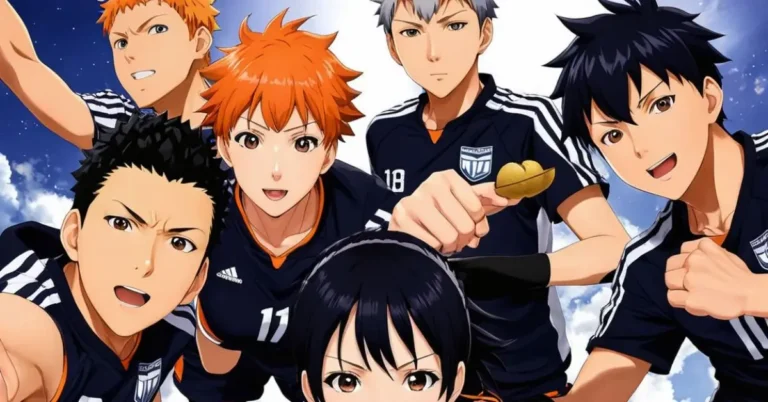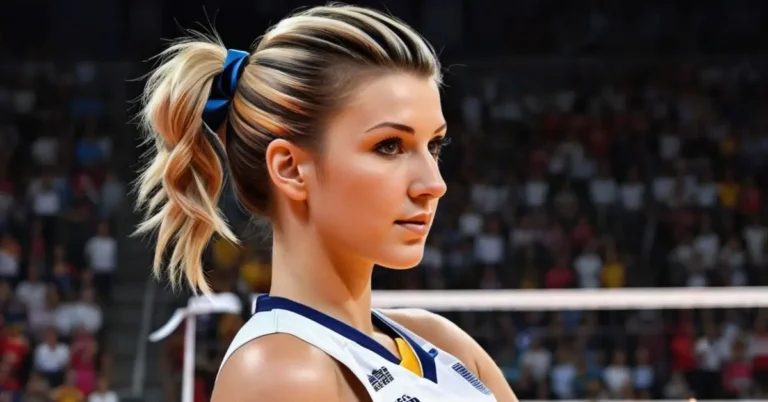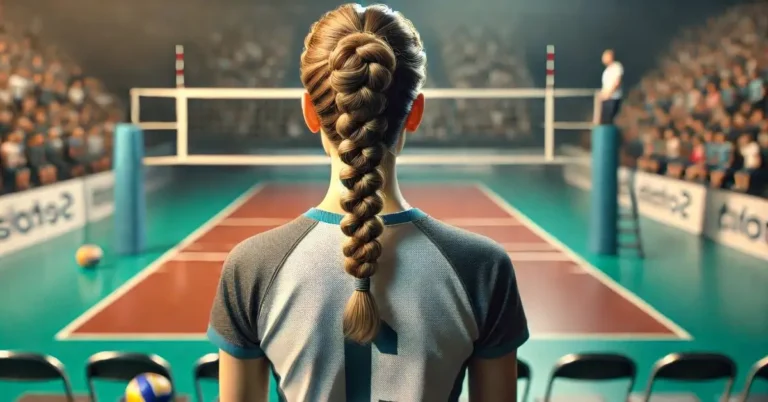I think we all can agree on having control over the ball in volleyball is THE must-have- ability when it comes to dominating the game. Only with ball control you can guarantee to serve at the player on the other side of the court, who potentially skipped the last ball control drills for volleyball 😉. You cannot be a good setter if you don’t have ball control. I am sure you know what I mean.
Philip and I collected some compelling drills tailored to enhance your control of the volleyball, ensuring that your next move is not just a response, but a tactical advantage.
Fundamentals of Volleyball Ball Control
When we talk about mastering volleyball, the heart of the game lies in ball control. It’s a skill that sets the foundation for every play, combining hand-eye coordination, precision, and agile footwork. Let’s explore the finer points of ball control drills for volleyball and why they’re a game-changer on the court.
Understanding Ball Control
Ball control in volleyball is about managing the ball’s movement precisely to maintain the tempo and flow of the game. It’s the player’s ability to deliver the ball to the right place, at the right time, and with the right force. Ideal ball control ensures that the set can be executed perfectly, the spike can be delivered powerfully, and the serve can disrupt the opponent’s formation.
Essential Elements of Ball Handling
A player’s touch on the ball is crucial—knowing how much pressure to apply during a pass or a set can mean the difference between a point won or lost. We focus on two primary elements:
- Hand Contact: The technique for contacting the ball must be refined, as improper hand placement or timing can skew the ball’s trajectory.
- Consistency: Repeated practice helps develop muscle memory, ensuring that responses become more intuitive during the game.
Footwork and Posture
The final, but no less critical, components of ball control are footwork and posture. We position our bodies and move our feet to keep the ball in play, which demands excellent balance and flexibility.
- Foot Placement: Quick and efficient steps allow us to maintain balance and adapt to the ball’s movement.
- Body Alignment: Keeping our knees bent, shoulders squared, and eyes on the ball enhances our ability to react and execute precise maneuvers.
Through diligent practice of ball control drills for volleyball, we build a robust platform upon which all other volleyball skills can flourish.
Core Ball Control Drills for Volleyball to Develop Basic Skills
We understand how crucial the fundamentals are when it comes to excelling in volleyball. These ball control drills for volleyball aren’t just exercises; they’re the building blocks for every move you make on the court. Let’s dive into specific routines designed to enhance your pass, set, and overall game play.
Repetition and 25 Contact Drill
- Objective: To improve consistency in ball handling using continuous contact.
- Method: Players work in pairs or small groups, ensuring the ball doesn’t touch the ground for a total of 25 contacts.
- Focus: This drill emphasizes the importance of a reliable first touch in control and the flow of the game.
It’s particularly effective for beginners who need to develop a feel for the ball and can be modified to suit varying skill levels.
24 Touches Drill
- Objective: To develop precision and control through varied ball touches.
- Method: The sequence involves 6 forearms passes, 6 figure 8s, 6 overhead passes, and finishes with 6 setting touches.
- Focus: This drill hones in on the player’s ability to transition between different types of touches seamlessly.
Great for integrating into daily practice, the 24 Touches Drill provides a comprehensive workout for ball control.
Pass and Set Routine
- Objective: To solidify the fundamental skills of passing and setting.
- Method: In pairs, players focus on accurate passing directly followed by setting, aiming for consistency.
- Focus: Encourages a stable platform for passing and soft hands for setting.
By integrating this routine into practice, players can develop a sharper sense of timing and precision, making it invaluable for players at all levels.
Advanced Ball Control Techniques
When we step onto the court, it’s crucial that we bring our A-game in ball control. By mastering advanced ball control drills for volleyball, our team can level up our game play, ensuring that every dig, set, and attack is executed with precision. Let’s work through some drills that can sharpen our skills in these pivotal areas.
Defensive Drills and Digs
Diving into the sand or springing across the hardwood, our defensive moves can turn the tide of any match. Practice targeted dig drills where we react to fast-paced and strategically placed attacks. We might set up scenarios where our teammates execute pre-planned attacks, and we work on channeling the ball to specific zones. Engaging in these high-intensity defensive drills ensures that when the pressure mounts, our digs keep us in the fight.
Setting and Attacking
To set up the perfect attack, we refine our setting techniques with drills focused on accuracy and speed. Quick set drills are great for enhancing our eye-hand coordination and allowing us to deliver precise sets under pressure. Pairing setters and hitters in drills mimics real match scenarios, building a rhythm and rapport crucial for successful attacking plays. Constant, rapid repetitions are key here; the smoother our sets, the more formidable our attacks.
Lateral Passing and Reaction Time
Volleyball isn’t just about vertical leaps; it’s about our ability to move swiftly on the horizontal plane too. Lateral passing drills improve our agility and teach us how to remain balanced while moving side to side. Incorporating these drills with a focus on enhancing reaction time prepares us for unpredictability during matches. We can use these drills to simulate real game situations, increasing our capacity to anticipate and react to unexpected shots.
Team-Based Volleyball Drills
When we look into advancing our team’s volleyball skills, the focus on effective ball control drills for volleyball becomes paramount. Together, we’ll explore exercises that not only sharpen individual skills but also foster communication and teamwork.
Pepper and Triangle Pepper Drill
Nothing says “volleyball basics” quite like the classic Pepper Drill, where two players volley the ball back and forth using passes, sets, and spikes. It’s a dynamic way to warm up and hone our ball handling.
Taking it a step further, the Triangle Pepper Drill introduces a third player, adding complexity and requiring heightened awareness and reactions. This variant enhances our ability to anticipate and control the ball in a more game-like scenario.
Communication and Teamwork Exercises
Effective communication is the backbone of any successful volleyball team. Drills that we perform should consistently integrate verbal cues and gestures to reinforce this crucial aspect. Through specific communication drills, we cultivate a sense of trust and ensure that each player understands their role during play.
Exercises focusing on teamwork may include controlled scrimmages where players are encouraged to call for the ball and provide feedback to each other. These drills imitate match conditions, pushing us to maintain ball control under pressure while staying connected as a unified team.
Back Row Attacks and Defense
Mastering back row attacks is vital for adding depth to our offensive strategies. Drills aimed at back row hitters involve powerful swings from behind the 10-foot line, incorporating both precision and control. These exercises challenge our spikers to maintain the accuracy of their hits while out of the front row.
Equally important is a strong defense, where players perform drills that improve their ability to dig and control back row attacks. Reinforcing our defensive skills ensures that we can handle powerful spikes and turn them into opportunities for our own offense.
Game-Situation Drills for Improved Performance
Ball control is the bedrock of volleyball, but it’s in the heat of a game that these skills are really put to the test. We’ve gathered some of the best game-situation ball control drills for volleyball to help your team’s performance when the pressure is on.
Ball Control Over the Net
In volleyball, the precision of passing over the net is critical. 4 x 2 Pepper Drill is an excellent practice for players to improve their ball control over the net. Partners stand on opposite sides of the net, one touching the ball twice before sending it over, the other receiving and repeating the action. This drill trains players to handle varied speeds and angles, honing their adaptability in high school matches and beyond.
Serve Receive and Short Serves
Serve receive is where the action starts, so possessing impeccable ball control in this area is non-negotiable. Drills such as the Passer Shuffle Drill bolster a team’s ability to handle serve receives and short serves. Players must pass the ball, shuffle to a designated spot, and be ready to receive again, reinforcing quick feet and sharp focus.
Volleyball Ball Control Elimination
Encourage a bit of friendly competition with an elimination drill aimed at polishing volleyball ball control. Start with players in a circle, continually passing the ball. When a player fails to control the ball, they are ‘out’ until the last one standing remains. This not only improves individual skills but also builds team morale as players cheer each other on.
Tips for Coaches and Players
When we talk about success in volleyball, it’s clear that strong fundamentals are crucial, and none more so than ball control. This skill can make or break a game, and that’s why our approach to ball control drills for volleyball must be both strategic and well-structured. Let’s zero in on how to structure practice sessions and measure progress effectively.
Structuring a Ball Control Practice Session
In setting up a practice session, it’s essential to keep our players engaged and challenged. Starting with simpler exercises like passing the ball to themselves can warm players up. We’ll want to quickly escalate to more complex drills that mimic real-game scenarios, including drills that emphasize precise bumping, setting, and serving.
Our session should follow this general structure:
- Warm-up: Incorporate dynamic stretches and basic ball handling to prep players.
- Skill drills: Progress from individual skills to team-based drills.
- Scrimmage: Apply skills in live settings, encouraging communication and teamwork.
- Cool down: End with stretches and a recap of what was learned.
Measuring Progress and Setting Targets
To ensure players are developing their skills effectively, it’s important to set clear targets and regularly measure progress. We can use simple metrics such as the number of successful passes or sets in a drill or the consistency of serves during practice. By setting incremental goals, players can see their own improvement, which boosts morale and dedication.
For tracking, consider these methods:
- Skill checklists: Break down each skill into components and mark improvements.
- Video analysis: Record practice to visually pinpoint where adjustments are needed.
- Performance metrics: Keep count of successful executions during drills.
Remember, clear and consistent communication from us as coaches is vital in facilitating player growth. Our feedback needs to be specific and actionable, helping players to understand their own development paths. Setting up a reward system for reaching targets can also be a powerful motivator. By harnessing these strategies, we’re not just running ball control drills for volleyball; we’re cultivating a team geared for game-time success.
FAQs
Mastering ball control is a game-changer in volleyball. We’ll explore some of the best “ball control drills for volleyball,” so you can enhance your skills effectively. Whether you’re a beginner or looking to polish your technique, let’s dive into these common queries.
How do I get better ball control in volleyball?
To improve your ball control in volleyball, consistent practice with targeted drills is essential. Drills like the 25 Contact Drill refine your ability to handle the ball through various touches. Incorporating drills that simulate game situations will help you react more quickly and accurately during actual gameplay. Focus on the fundamentals of proper form and footwork to build a solid foundation.
What is butterfly drill in volleyball?
The butterfly drill is a popular training exercise designed to enhance players’ movement and ball control skills. In this drill, players practice passing, setting, hitting, and digging in a repetitive and dynamic fashion, which promotes muscle memory and proficiency in various on-court scenarios. It encourages players to maintain control while moving quickly and efficiently.
How do you control passing in volleyball?
Controlling passing in volleyball is about precision and positioning. Ensure your platform is firm and angled towards the target. Keep your feet shoulder-width apart for stability, and use your legs to adjust to the ball’s trajectory. It’s crucial to anticipate where the ball will go and to communicate with your teammates to establish who will take the pass.
What is the pepper drill in volleyball?
The pepper drill is a versatile exercise that can be tailored for improving a range of skills, including ball control. It involves two players passing, setting, and spiking the ball back and forth without letting it hit the ground. This drill enhances reflexes, precision, and coordination, all of which are integral for strong ball control.
We hope you could find some valuable input about ball control drills for volleyball. We would be curious about your experience: What drills are your favourite? Which ones do you like at least? Why? Let us know in the comments.
If you liked this article you might want to dive a little bit deeper into tryout-drills or volleyball drills for middle school.





